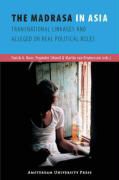Read more
Since the rise of organizations like the Taliban and Al Qaeda, the traditional Islamic school known as the "madrasa" has frequently been portrayed as a terrorist hotbed. For much longer, the madrasa has been considered by some as a backward and petrified impediment to Islamic social progress. However, for an important segment of the poor Muslim populations of Asia, madrasas constitute the only accessible form of education and an opening to the wider world. This comprehensive volume presents a representative overview of the unknown world behind the walls of these institutions in nations such as China, Indonesia, Iran, and Pakistan, showcasing the educational changes and transnational networks that help to produce an alternative form of globalization.
List of contents
Contents - 6 Acknowledgement - 8 Introduction - 10 1 Voices for Reform in the Indian Madrasas - 32 2 Change and Stagnation in Islamic Education - 72 3 'Inside and Outside' in a Girls' Madrasa in New Delhi - 106 4 Between Pakistan and Qom - 124 5 The Uncertain Fate of Southeast Asian Students in the Madrasas of Pakistan - 142 6 Muslim Education in China - 170 7 From Pondok to Parliament - 192 8 Traditionalist and Islamist Pesantrens in Contemporary Indonesia - 218 9 The Salafi Madrasas of Indonesia - 248 Contributors - 276 Glossary - 280 Acronyms and Names of Organisations, Movements and Institutions - 286 Maps - 292 Index - 298
About the author
Farish A. Noor is senior fellow at the S. Rajaratnam School of International Studies at Nanyang Technical University in Singapore. Yoginder Sikand is a freelance writer based in Bangalore, India. Martin van Bruinessen is the ISIM Chair for the Comparative Study of Contemporary Muslim Societies at Utrecht University.

